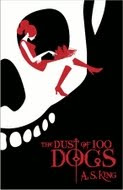 Siegel, Siena Cherson. To Dance: A Ballerina's Graphic Novel. Illustrations by Mark Siegel. New York: Aladdin Paperbacks - Simon & Schuster, 2006. Print.
Siegel, Siena Cherson. To Dance: A Ballerina's Graphic Novel. Illustrations by Mark Siegel. New York: Aladdin Paperbacks - Simon & Schuster, 2006. Print.[Book cover credit: librarything.com/work/1604483]
Awards:
NPR's Complete Holiday Book Recommendations (2006)
School Library Journal Best Book of the Year (2006)
ALA Great Graphic Novels for Teens (2007)
ALA Notable Children's Book (2007)
Booklist's Top 10 Graphic Novels for Youth (2007)
Sibert Honor (2007)
Booktalk:
Big empty spaces always made me dance. A long hallway or a parking lot just begged for dance ... like it wanted to be filled ... and I wanted to put dance in it.
(unpaged)
So young Siena decides, like so many others, that she wants to be a ballerina. And then, for a time, she is.
Review:
To Dance tells the familiar story of a young girl, in this case Siena when she was a child, who wants to grow up to be a ballerina. She starts ballet lessons, shows a real talent, and makes it to New York City where she trains in a feeder school for a big ballet company, in this case New York City Ballet’s School of American Ballet, where she is discovered. Mark Siegel’s illustrations allow the reader to share in Siena’s wonder and sometimes confusion with this whole new world in which she finds herself. He is also a kind of translator for the “uninitiated” in ballet lore and jargon, providing illustrations and examples of being en pointe and or dancing a pas de deux to name a few. For this reason, the format of the graphic novel works very well here. It elevates the reading level beyond that of a picture book without wordy explanations that detract from the story. Those who are more familiar with ballet will find the illustrations amusing and beautiful with gorgeous renditions of the varying levels of ballet classes and some “cameo appearances” of the big names of the New York City Ballet in the 1970’s to early 1980’s.
This basic story has been told many times. Two examples that jump out from my reading history are Ballerina Dreams, an easy reader by New York City Ballet’s Diana White and Gelsey Kirkland’s only-for-grown-ups memoir, Dancing on My Grave. The big difference between these books and To Dance, aside from format, is that even those well-versed in the recent and current ballet world will not recognize the name Siena Cherson Siegel; she is not a ballerina. As chronicled in this graphic novel, Siegel dances in a few performances with the New York City Ballet in pre-professional roles, but then goes on to attend college at Brown and dance for her own enjoyment rather than dance professionally. The ending to this story is very rarely told, though much more common. To Dance emphasizes how dance can mold one’s life while at the same time, showing how Siena takes the time to be a “normal” kid as well as positively showing her choice not to dance professionally. By sharing her story in To Dance, Siegel is affirming anyone who wants to use anything that they are talented at or simply enjoy as a hobby, an enjoyment, rather than a career choice. For this reason, along with the beauty of the illustrations and Siegel’s writing, I highly recommend this book.
Book source: Birthday present, years ago, from Nanna. :)
*Except that I'm not counting this one, as it's a re-read. I'm posting this review so that I'll have a complete list of reviews for my Unsung YA Heroes post.







